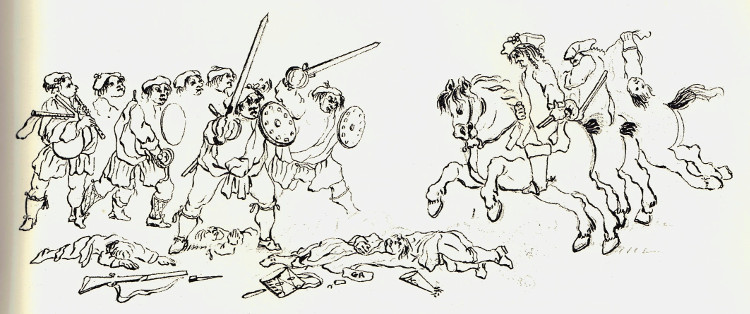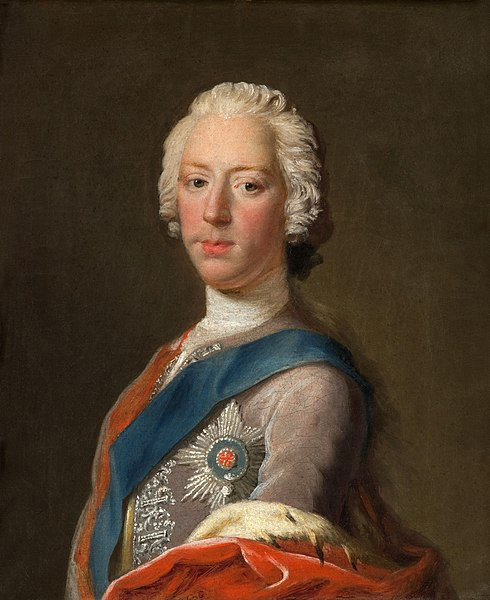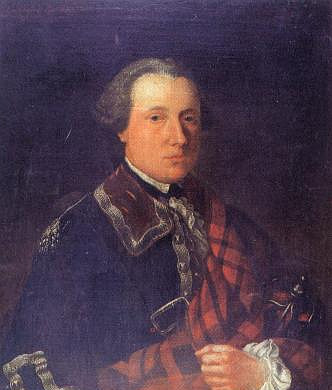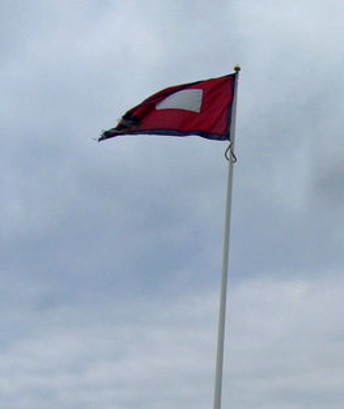
On 19 August, 1745, a hastily-made red and white flag lifted in the breeze at Glenfinnan, at the north end of Loch Shiel in the Western Highlands of Scotland. It signalled the beginning of the Jacobite Rising of 1745 – but the chances of the flag’s ever being unfurled were in doubt until the last moment, as Frances Owen writes on the 275 anniversary of the raising of the Jacobite standard.
In a small barn at the head of Loch Shiel a tall young man was waiting. Charles Edward Stuart (Prince Charles to his followers, ‘the Pretender’s son’ to his enemies, Bonnie Prince Charlie in gift shops) had spent the weeks since he landed in Scotland on 23 July, 1745, summoning, persuading, charming the clan chiefs he expected support from to meet him at Glenfinnan “one hour after noon” on the 19th.
Glenfinnan was the perfect place to gather, his advisors knew: on the border of the territory of two of the great Highland clans, MacDonald and Cameron; safe from attack from the sea; and surrounded by mountains, only accessible by foot. And, as a military map drawn up in 1731 to show the number of men each clan could muster demonstrates, it was exactly in the right place to be easily reached by the largest number of clansmen.

But it was nearly three o’clock now, and all Charles had was his bodyguard of 50 MacDonalds of Clanranald and the 150 Morar MacDonalds who had joined him at Glenfinnan, plus a number of supporters and lookers-on – and one captured redcoat. It was a dispiriting start to the day when he had planned to proclaim his father King.
In fact the whole enterprise so far had been less than encouraging. The French king, Louis XV, had not provided the ships and troops Charles needed (and believed he had been promised). Instead, he had arrived with one frigate (the Doutelle or Du Teillay), privately hired, with a few followers, the ‘Seven Men of Moidart‘, and no soldiers, arms or ammunition – the ship which carried them, the Elisabeth, had been crippled by a Royal Navy gunship. The day after he first landed, on the island of Eriskay, the influential local chief MacDonald of Boisdale had told him, bluntly, to go home. “I am come home,” Charles answered. “I am persuaded my faithful highlanders will stand by me.”
But the clan chiefs of Skye, key to his plans, refused to join him. Sir Alexander MacDonald of Sleat and Norman MacLeod of Dunvegan had been strongly persuaded by Duncan Forbes of Culloden, the senior legal officer in Scotland, not to support Charles.
Against the advice of most of his party, Charles was determined to press on. From his headquarters at Borrodale House in Moidart he continued to send messages to the clan chiefs and other influential supporters of the Stuarts, summoning them to Glenfinnan.
A turning point had come when Ranald, eldest son of the important MacDonald of Clanranald, whose country Charles was now in, pledged his support. He had been reluctant, but was persuaded by one of the flashes of charm that Charles was becoming known for. Young Clanranald’s relative, another Ranald (of Kinlochmoidart), was aboard the Doutelle – which Charles had kept temporarily moored in the loch – with other MacDonalds as the Prince attempted to get them to join him. Charles, seeing the clansman’s shock or embarrassment at their refusal, asked him: “Will you not join me?”
“I will… though no other man in the Highlands should draw a sword, I am ready to die for you.”
And that was it for Clanranald; he would have been shamed if a relative, ranking lower in the clan, had pledged support while he, the chief’s son, held back. He agreed to bring his men out for the Prince.
But it wasn’t enough. Charles was also wooing Donald Cameron of Lochiel, the head of another major clan in the area. Lochiel was understandably reluctant to commit himself and his men to the enterprise without the expected support of French troops. He did agree, though, to meet Charles despite his brother John’s warning that the now-notorious Stuart charisma would make his resolve crumble.
Which it did. Whether he changed his mind because Charles reportedly said to him: “Lochiel, who, my father has often told me, was our firmest friend, may stay at home and learn from the newspapers the fate of his prince,” or because Charles guaranteed to recompense him for his estates if they were confiscated by the government, is not recorded. The result was the same: with Lochiel’s men, Charles now had the start of an army. The rising could now go ahead.
But at Glenfinnan, as the afternoon of 19 August wore on, it looked as if Charles’s confidence was unjustfied. He had 200 men and a standard, a white square on a red background sewn by the ladies living at Dalilea, the MacDonald house at the south end of Loch Shiel where he had broken his journey the day before. It was barely enough to start a skirmish, let alone a war. Where were the promised clansmen?
He also had “a large quantity of oatmeal, and… a sufficient quantity of brandy (two of the most grateful things that could be given to a Highlander)”, according to Aeneas MacDonald, one of the Seven Men and the brother of Kinlochmoidart. But no army to feed.
True, there had been a couple of minor victories. It had taken a week for news of Charles’s arrival in Scotland to reach the Government in London. They ordered troops to be sent to Fort William to reinforce the garrison there, but when two companies of Royal Scots reached High Bridge on the River Spean (near where the Commando Memorial at Spean Bridge now is) they were ambushed by MacDonalds of Keppoch and captured. In a separate incident, the Keppoch men also attacked Guise’s Regiment of Foot near Fort William and took captives, including one Captain Swettenham.

But that was no more than a temporary morale boost. And by now the Government had announced “that any person who secures the son of the Pretender is entitled to a reward of £30,000” (worth between £5m and £743m today).
It was now about three o’clock. Despite Charles’s almost unshakeable belief that he would succeed, yet again it looked as if the rising was over before it had properly begun.
Then from the high hills north of Glenfinnan came the sound of bagpipes. A long line of clansmen came into sight, zig-zagging down the steep slopes. And kept on coming.
Lochiel had arrived with 700 of his men. The standard could now be raised; the uprising was under way.
Surprisingly, descriptions of the rest of the afternoon are sparse. There is, perhaps, more written about the site where the flag was planted, either on the small hill behind where the National Trust for Scotland visitor centre now is (and where half the staff may face losing their jobs because of the slump in visitors in 2020) or on a hillock to the north-west, where an inscribed rock has been found, reading: ‘IN NOMINE DOMINI HIC VEXILLA TANDEM TRIUMPHANTES CAROLI EDUARDI STUART ERECTA‘.
The standard, we do know, was planted by the Jacobite Duke of Atholl, or Marquis of Tullibardine in the official Scots peerage, another of the Seven Men, who had fought for the Stuarts in 1715 and 1719. A frail man, seeming older than his 58 years, he was helped by two others to hold it steady as Charles read out the proclamation of his father as King James VIII and III, followed by his own appointment as Prince Regent to act in his father’s absence.
He was speaking in English; most of the clansmen would have spoken Scots Gaelic, so his words were translated. It’s possible that the translator was the bard Alasdair Mac Mhaighstir Alasdair, or Alexander MacDonald, whose poetry inciting the clans to rise for King James was widely circulated long before Charles set foot on the Doutelle. He may even have sung his welcome song Tearlach Mac Sheumais (Charles son of James) during that afternoon. Alasdair, who had lived with his family at Dalilea for the past few months, was to be Charles’s Gaelic tutor.
Then it was time to broach those casks of brandy, “a liquor absolutely necessary in the Highlands” according to Aeneas MacDonald – if they had not been opened already – and drink to their Stuart king and prince and to the rising.
Watching the proceedings with perhaps less enthusiasm were Captain Swettenham, brought there by the first Lowland laird to join the Prince, John Gordon of Glenbucket from what is now Aberdeenshire. And, guarded by the Camerons who had marched them to Glenfinnan, the now disarmed Royal Scots troopers. It was a clever propaganda move to have them witness the raising of the standard; released, they would return to their commanding officers with news of the enthusiasm (and size) of the Jacobite forces.
At about five o’clock, the last troop of clansmen joined them: Alexander MacDonald of Keppoch and about 300 men. With some MacLeods who arrived later in defiance of their clan chief, this brought the army to over 1,200 men: enough to face Government troops in the field, Charles decided.
It was time to go hunting Sir John Cope and his 3,000 or so redcoats and stop them getting to Edinburgh before the Jacobite troops could arrive there.
The armies met just over a month later at Prestonpans, just outside the city. It was Charles’s first victory. Seven months later he had his first defeat – at Culloden Moor.
Frances Owen is the editor of Historia. She’s the co-author of A Rebel Hand: Nicholas Delaney of 1798.
Find out some surprising facts about Prince Charles Edward Stuart in Historia’s feature marking 300 years since his birth.
Images:
Glenfinnan by Radu Micu: via Flickr
A description of the Highlands by Clement Lempriere, 1731 (NB: Loch Shiel isn’t shown on the map): Reproduced with the permission of the National Library of Scotland
Prince Charles Edward Stuart by Allan Ramsay, 1745 (the ‘lost portrait’): via Wikimedia
Donald Cameron of Lochiel: via Wikimedia
‘Penicuik drawing’ of Highlanders and a dead redcoat, c1745: via Wikimedia
Replica of the Glenfinnan standard by kim traynor: via Geograph
Alexander MacDonald of Keppoch, posthumous portrait c1765: via Wikimedia








